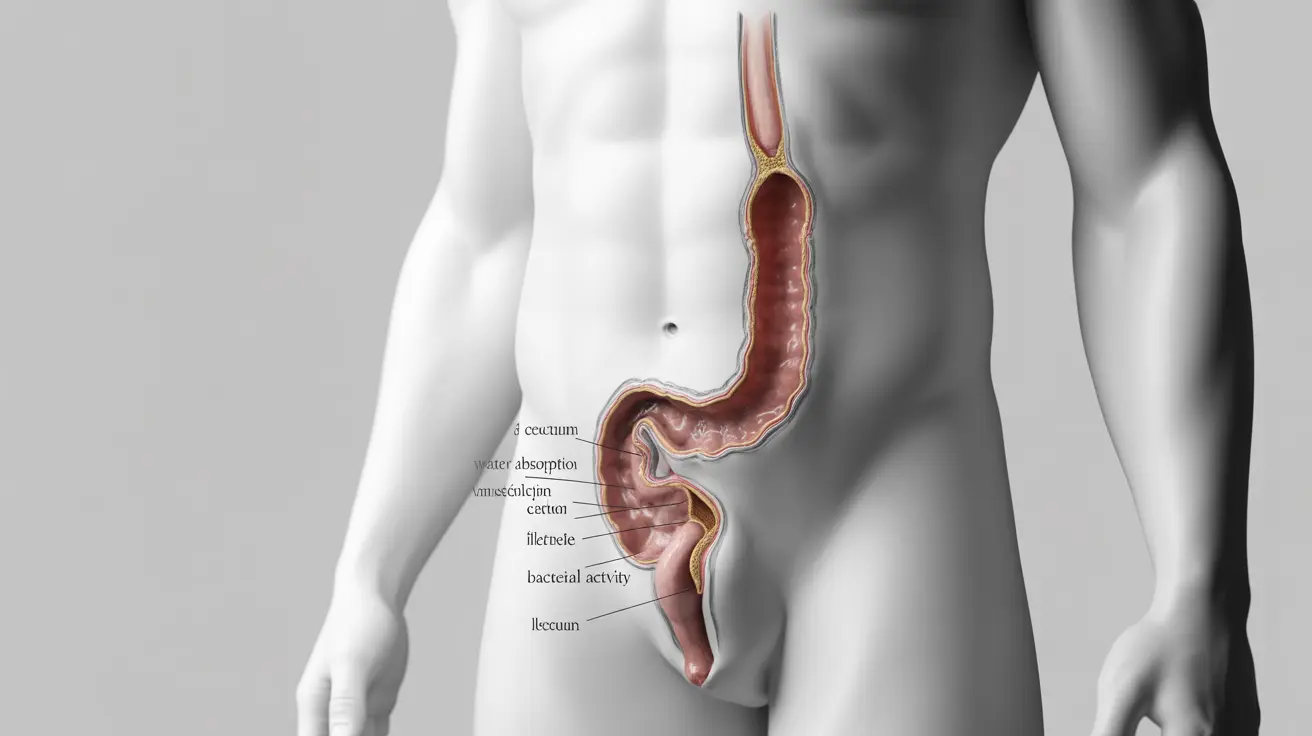The ascending colon plays a crucial role in our digestive system, serving as a vital segment of the large intestine that helps process waste and maintain fluid balance in the body. This important anatomical structure performs several essential functions, from absorbing water and electrolytes to supporting the body's digestive processes.
Understanding the ascending colon's role, location, and potential health issues is essential for maintaining digestive health and recognizing when medical attention might be needed. Let's explore this important part of the digestive system in detail.
Anatomy and Location of the Ascending Colon
The ascending colon is positioned on the right side of the abdomen, extending upward from the cecum (the beginning of the large intestine) to the hepatic flexure, where it bends to become the transverse colon. This vertical segment measures approximately 20 centimeters in length and is secured to the posterior abdominal wall.
Key anatomical features include:
- The connection to the cecum at its lower end
- The ileocecal valve, which controls flow from the small intestine
- The hepatic flexure at its upper end
- Attachment to the posterior abdominal wall via peritoneal connections
Function and Importance
The ascending colon performs several vital functions in maintaining digestive health and body homeostasis:
Water Absorption
One of the primary functions of the ascending colon is water absorption. As digestive matter moves through this section, significant amounts of water are extracted and returned to the body, helping to prevent dehydration and maintain proper fluid balance.
Bacterial Activity
The ascending colon houses beneficial bacteria that aid in:
- Breaking down remaining nutrients
- Producing certain vitamins
- Supporting immune function
- Maintaining gut health
Movement of Contents
Through coordinated muscular contractions, the ascending colon moves partially digested material upward against gravity, ensuring proper processing of waste materials.
Common Health Issues
Several health conditions can affect the ascending colon:
Tumors and Polyps
The ascending colon is a common site for colorectal tumors and polyps. Regular screening is essential, especially after age 45, as early detection significantly improves treatment outcomes. Treatment options may include surgical removal, chemotherapy, or radiation therapy, depending on the stage and type of tumor.
Inflammatory Conditions
Various inflammatory conditions can affect the ascending colon, including:
- Inflammatory bowel disease (IBD)
- Diverticulitis
- Colitis
- Infections
Warning Signs and Symptoms
Several symptoms may indicate problems with the ascending colon:
- Persistent abdominal pain, especially on the right side
- Changes in bowel habits
- Blood in stool
- Unexplained weight loss
- Chronic constipation or diarrhea
Frequently Asked Questions
What is the role of the ascending colon in digestion and water absorption?
The ascending colon primarily absorbs water and electrolytes from digestive matter, helps form stool, and houses beneficial bacteria that aid in final nutrient breakdown and vitamin production.
Where is the ascending colon located in the body, and what are its anatomical boundaries?
The ascending colon is located on the right side of the abdomen, extending upward from the cecum to the hepatic flexure. It's approximately 20 centimeters long and is attached to the posterior abdominal wall.
Why are tumors commonly found in the ascending colon, and how are they treated?
Tumors often develop in the ascending colon due to its role in processing waste materials and exposure to carcinogens. Treatment typically involves surgical removal of the tumor, possibly combined with chemotherapy or radiation therapy, depending on the cancer stage.
What symptoms might indicate a problem in the ascending colon?
Key symptoms include right-sided abdominal pain, changes in bowel habits, blood in stool, unexplained weight loss, and persistent constipation or diarrhea.
How does the ileocecal valve affect the function of the ascending colon?
The ileocecal valve regulates the flow of material from the small intestine into the ascending colon, preventing backflow and ensuring proper digestion timing. It helps maintain the distinct environments needed for different digestive processes.




